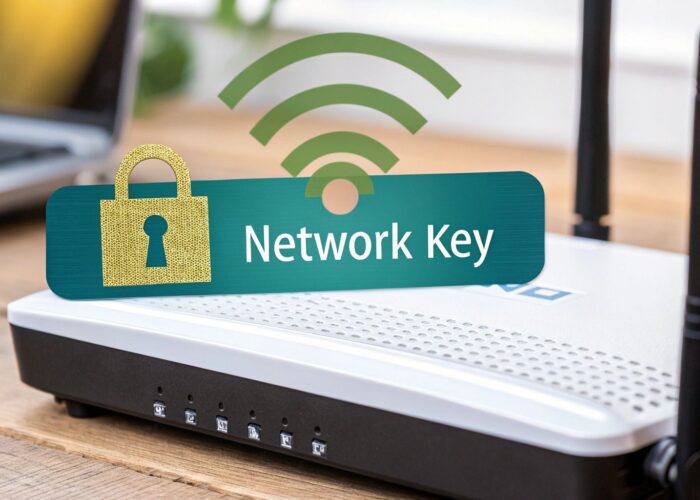If you're managing a network for a hotel, retail center, school, or corporate office, you know the challenge isn't just about keeping the Wi-Fi connected. It's about protecting your organization's data and users from increasingly sophisticated threats. One of the most powerful security strategies you can have in your toolkit is network segmentation. Think about it: a flat, open network is like leaving every door in your building unlocked. It’s an open invitation for trouble, especially in today's world of Bring-Your-Own-Device (BYOD) traffic.
Properly segmenting your network isn't just a "nice-to-have" anymore; it's a must-do for solid security. This is where modern solutions, especially from leaders like Cisco and Meraki, really shine. They give you the tools to create secure, isolated zones for different users, devices, and applications. It's like being a digital bouncer, setting up velvet ropes to ensure students, shoppers, corporate staff, and guests only get access to the resources they truly need. For example, a friendly Captive Portal can welcome guests onto a segregated internet-only network, while a slick authentication solution like Identity Pre-Shared Key (IPSK) or EasyPSK can automatically place employee devices onto a more privileged, secure segment.
This guide is all about getting down to business. We'll explore 8 crucial network segmentation best practices that will help you transform your basic Wi-Fi setup into a robust, intelligent, and secure architecture. From adopting a Zero Trust mindset to leveraging the power of micro-segmentation and robust Network Access Control (NAC), these practices will give you a clear roadmap to building a digital fortress. Let's dive in!
1. Embrace a 'Never Trust, Always Verify' Mindset with Zero Trust (ZTNA)
The old-school "castle-and-moat" security model, where we trusted everyone and everything inside the network, is long gone. Today’s threats are smarter, and with people working from everywhere, we need a tougher approach. Say hello to the Zero Trust model, which operates on the simple but powerful principle of "never trust, always verify." It assumes that threats could be anywhere—outside and inside your network—requiring strict verification for every user and device before they get access to anything.
In a real-world sense, Zero Trust means nobody gets a free pass. Whether it’s a student on a university campus, a shopper in a retail center, or an employee connecting from their home office, their identity and device health have to be checked and re-checked for every single access request. For organizations rocking Cisco Meraki gear, this means using powerful authentication solutions and Captive Portals to put every Wi-Fi connection under the microscope, ensuring only verified users can access specific resources.
Why It's a Top Practice
Zero Trust completely flips your security posture from reactive to proactive, which massively shrinks your attack surface. By getting rid of that old-fashioned implicit trust, you create tiny security bubbles around your most important data and apps. For example, in an education setting, a compromised student laptop is stopped in its tracks before it can access sensitive faculty records because it fails the continuous verification checks. In a corporate BYOD environment, personal devices are thoroughly vetted before they can touch company data, containing potential threats right at the front door. To dive deeper into this foundational security philosophy, explore this guide on Zero Trust security.
How to Implement Zero Trust
Adopting Zero Trust doesn't have to be a massive headache. A gradual, step-by-step approach is the way to go.
- Start with Strong Identity Management: The heart of Zero Trust is knowing exactly who is on your network. Roll out robust identity and access management (IAM) with strong authentication methods like Identity Pre-Shared Keys (IPSK) or EasyPSK. These awesome technologies let you assign a unique key to each device, tying access directly to a verified identity.
- Enforce Multi-Factor Authentication (MFA): Add another tough layer of security by requiring a second form of verification for all users. It's a simple step but incredibly effective at stopping bad actors who have stolen passwords.
- Segment by Identity, Not Just Location: Use your authentication data to create dynamic segments. For instance, a retail store could use its guest Wi-Fi authentication system to give shoppers access only to the internet, while staff devices get access to internal inventory systems based on their roles.
- Monitor and Log Everything: Keep a close eye on all network traffic for anything that looks fishy. Comprehensive logging gives you the visibility you need to spot and respond to threats quickly, which is a huge part of the "always verify" principle.
Key Insight: Zero Trust isn't a single product you buy, but a smart security framework. It brings together identity verification, device validation, and least-privilege access policies to create a much more resilient and secure network.
2. Implement Granular Control with Network Micro-segmentation
While traditional network segmentation creates big, broad divisions, micro-segmentation takes security to a whole new level of detail. This advanced approach is all about dividing your network into tiny, isolated segments—sometimes down to a single app or workload. Each little zone gets wrapped in its own security controls and policies, creating a super-controlled environment. Unlike bigger VLAN-based strategies, micro-segmentation makes it incredibly difficult for an attacker to move around if they manage to breach one area, effectively trapping them in a small digital room.
For a large retail chain, this could mean completely isolating point-of-sale (POS) systems from the free guest Wi-Fi and the inventory management network. Even if the guest Wi-Fi gets compromised, the threat can't spread to critical payment data. In a corporate office with a BYOD policy, an employee's personal phone can be micro-segmented to access only the internet and specific apps, while their company-issued laptop has access to more internal resources. This level of control is a game-changer for building a truly secure setup.
Why It's a Top Practice
Micro-segmentation is one of the most effective network segmentation best practices for stopping the kind of widespread damage we see from modern cyberattacks. By shrinking the attack surface around your most critical assets, you create a system where a breach in one area is just a small incident, not a full-blown network catastrophe. It ensures that even if one segment is compromised, the rest of your network stays safe and sound.
How to Implement Micro-segmentation
Rolling out micro-segmentation requires a bit of strategy, focusing on visibility and smart automation to manage it all without pulling your hair out.
- Start with Critical Assets: Begin by identifying and isolating your most valuable data and applications. For an education environment, this would mean creating secure micro-segments around student information systems and faculty records first.
- Map Application Dependencies: Before you start making rules, you need to understand how everything talks to each other. Use network monitoring tools to map these connections so you don’t accidentally block something important when you flip the switch on your new policies.
- Leverage Identity-Based Policies: Use powerful authentication solutions, such as IPSK or EasyPSK, to create dynamic segments based on who the user is and what device they're using. A Cisco Meraki network can use this data to automatically place a university professor's laptop in a segment with access to academic resources, while a student's device is placed in a more restricted one.
- Test and Monitor Before Enforcement: Roll out your new policies in a "monitor-only" mode first. This lets you check that your rules are working correctly without blocking any legitimate traffic before you go live. Continuous monitoring is key to keeping up with new threats and changes.
Key Insight: Micro-segmentation moves your security controls from the edge of your network right up to the applications themselves. This app-centric approach provides way better protection in today's dynamic IT world, from sprawling corporate networks to campus-wide Wi-Fi.
3. Implement Granular Control with Role-Based Access Control (RBAC)
Giving everyone on your network the keys to the entire kingdom is a huge security no-no. A much smarter approach, and a core part of effective network segmentation best practices, is implementing Role-Based Access Control (RBAC). This method controls network access based on the roles people have within your organization. Instead of giving permissions to individuals one by one (what a headache!), you assign them to roles, and then assign users to those roles. This makes managing access a breeze and enforces the principle of least privilege.
In practice, RBAC ensures that a user only has access to the network resources they absolutely need to do their job. In a retail store, for instance, a cashier would have a role that grants access to the point-of-sale system but not the company's financial servers. Similarly, in a corporate BYOD environment, a marketing team member's role would let them access creative assets and campaign tools, while blocking them from engineering or HR databases. This fine-tuned control is essential for containing potential security breaches.
Why It's a Top Practice
RBAC provides a scalable and manageable way to enforce security policies across your whole organization. It cuts down on the administrative work of adding and removing users while dramatically lowering the risk of unauthorized data access. In a retail setting, seasonal employees can be assigned a temporary role with limited access that’s super easy to revoke when their contract ends. In a university, student roles can restrict access to the general campus Wi-Fi while faculty roles get permissions to access academic databases, all managed through one central system.
How to Implement RBAC
Integrating RBAC into your network segmentation strategy just takes a little planning and the right tools. A phased approach usually works best.
- Define Clear Roles and Responsibilities: Start by taking a good look at your organization to identify different job functions. Group users with similar access needs into roles like "Guest," "Student," "Store-Manager," or "Corporate-Staff."
- Leverage Dynamic Authentication: Use powerful authentication solutions to assign roles automatically when someone connects. A Cisco Meraki Captive Portal, for instance, can talk to external databases to assign a specific role based on a user's login. Technologies like Identity Pre-Shared Keys (IPSK) or EasyPSK can tie a device directly to a user's role, making the whole process seamless.
- Enforce Role-Based Policies: Once your roles are defined, create and apply access policies for each one. This could mean setting bandwidth limits for a "Guest" role, blocking a "Student" role from certain websites, or giving an "Admin" role full access.
- Conduct Regular Access Reviews: People change roles and responsibilities. Set up a process to regularly review who has access to what, ensuring permissions are still appropriate and removing any that are no longer needed.
Key Insight: RBAC turns access control from a complicated, person-by-person chore into a streamlined, policy-driven strategy. By aligning network permissions with organizational roles, you create a more secure, compliant, and easy-to-manage environment.
4. Network Traffic Analysis and Monitoring
Setting up network segmentation is a fantastic first step, but it's only truly effective if you can see what's going on. Network Traffic Analysis and Monitoring is all about constantly watching, analyzing, and recording the communications flowing across your network. This eagle-eyed view helps you understand normal traffic patterns, spot weird behavior that could signal a threat, and make sure your segmentation policies are actually working. It’s like having a top-notch CCTV system for your network data, giving you a clear picture of who is talking to whom.
This practice involves gathering and analyzing network data, especially at the boundaries between your segments. For anyone using Cisco Meraki, this means diving into the built-in traffic analytics to see how devices—from student tablets in a university to guest smartphones in a retail store—are interacting with network resources. By understanding this flow, you can confirm that your segmentation rules, enforced by your Captive Portal and authentication solutions, are successfully keeping different user groups separate.
Why It's a Top Practice
Continuous monitoring transforms your segmented network from a static wall into a dynamic, intelligent defense system. It gives you the visibility needed to catch threats that might have slipped past your perimeter defenses, like a compromised point-of-sale terminal in a retail store or a malware-infected BYOD laptop in a corporate office. By figuring out what "normal" looks like, any deviation immediately raises a red flag, allowing for a quick investigation. This proactive approach is a cornerstone of effective network segmentation best practices, ensuring your security can adapt to new tricks from attackers.
How to Implement Network Traffic Analysis
You don't need to rip and replace everything to get started with traffic analysis. It's all about using modern tools and a methodical approach.
- Establish a Network Baseline: First things first, you need to understand what "normal" looks like on your network. Use your network management tools, like the Meraki dashboard, to map out typical traffic flows between segments over a period of time. This baseline is your secret weapon for spotting unusual activity later.
- Leverage Built-in Analytics: Modern networking gear from providers like Cisco Meraki comes with powerful, built-in traffic analysis tools. Dig into these features to get amazing insights into application usage, client traffic patterns, and bandwidth hogs within each network segment.
- Focus on Segment Boundaries: Pay extra close attention to the traffic moving between your different segments or VLANs. This is where your segmentation policies are doing their work, making it a critical spot to monitor for policy violations or attackers trying to move sideways.
- Integrate with Your Security Stack: Feed your network monitoring data into your other security tools. Connecting it with a Security Information and Event Management (SIEM) platform gives you a much bigger picture of potential threats across your entire organization. To get a deeper understanding of this topic, explore these network monitoring best practices.
Key Insight: Network segmentation without monitoring is like having a locked door with no alarm. Visibility into your traffic is what proves your security policies are working and gives you the early warnings you need to stop threats before they get out of hand.
5. Build Secure Micro-Tunnels with a Software-Defined Perimeter (SDP)
Taking a leap beyond traditional network segmentation, a Software-Defined Perimeter (SDP) creates an invisible, secure layer over your network that cloaks your important resources. Based on the "need-to-know" idea, an SDP makes your applications and servers completely invisible to anyone who isn't explicitly authorized. It essentially creates a dynamic, encrypted mini-tunnel between a verified user and the specific resource they need, making everything else on the network impossible for them to see or access.
This approach is a huge step forward in network segmentation best practices, especially for today's distributed work environments. Instead of relying on where someone is connecting from, an SDP focuses on the user's and device's identity to build a secure perimeter around individual applications. For a retail business, this means a customer's device on the guest Wi-Fi can be completely isolated from critical point-of-sale systems, even if they're connected to the same physical network.
Why It's a Top Practice
An SDP framework massively reduces your attack surface by basically turning your network into a "black box" for unauthorized users and would-be attackers. Since your resources are hidden by default, attackers can't scan for vulnerabilities because, from their point of view, there's nothing there to scan. This is a game-changer in a corporate BYOD setting, where a compromised personal device connecting through a Captive Portal can be completely blocked from ever seeing, let alone accessing, sensitive company servers. This "authenticate first, then connect" model is a powerful defense against attacks.
How to Implement an SDP
Setting up an SDP is a strategic move that relies on modern authentication and network management, often integrating beautifully with technologies like Cisco Meraki.
- Start with Critical Assets: Pinpoint your most sensitive applications or data. Kick off your SDP deployment by wrapping these high-value assets first, creating secure micro-perimeters for high-risk users or remote employees.
- Enforce Strong Device and User Authentication: The bedrock of SDP is verifying identity before granting any connection. Integrate powerful authentication solutions like Identity Pre-Shared Keys (IPSK) or EasyPSK to tie every connection to a specific, verified user and device. This ensures only trusted folks can even ask to connect.
- Leverage Multi-Factor Authentication (MFA): Require MFA for every access attempt through the SDP. This adds a crucial layer of security, making sure that even if someone’s password gets stolen, unauthorized access is stopped cold.
- Integrate with Your Network Fabric: An SDP works hand-in-hand with your existing infrastructure. This architecture is closely related to software-defined networking, which centralizes network control. To better understand how these software-based approaches function, you can learn more about the principles of Software-Defined Networking.
Key Insight: An SDP flips the old security model from "connect then authenticate" to "authenticate then connect." It ensures a trust relationship is established before any network access is granted, making it a far superior model for securing today's scattered resources.
6. Enforce Granular Policies with Network Access Control (NAC)
While Zero Trust gives you the guiding philosophy, Network Access Control (NAC) is the muscle that puts that philosophy into action. A NAC solution acts as a strict but fair security gatekeeper, enforcing policies for every single device that tries to join your network. It authenticates users, authorizes access levels, and continuously checks device health, ensuring that only compliant and trusted devices can connect to specific network segments. This automated enforcement is a critical piece of modern network segmentation best practices.
In the real world, NAC automates the whole verification process. Picture a corporate office with a BYOD policy. When an employee connects their personal laptop to the Wi-Fi, the NAC system instantly checks if its antivirus software is up-to-date and its operating system has the latest patches. If it passes the health check, it's granted access to a specific network segment with limited resources. If it fails, it can be automatically shunted to a quarantine area with instructions on how to fix the issues, all without a single IT helpdesk ticket.
Why It's a Top Practice
Implementing NAC gives your security a massive boost by automating policy enforcement at scale, ensuring consistent protection across your entire network. This stops non-compliant or compromised devices from ever getting a foothold. In an education setting, a NAC solution can make sure that only authorized student and faculty devices connect to the network, helping to maintain data privacy. For a university, it can effortlessly differentiate between students, faculty, and guests, automatically assigning them to the right network segments with different access rights and security policies.
How to Implement NAC
A successful NAC rollout is a step-by-step process that builds on your existing security setup, including your Cisco Meraki network and authentication solutions.
- Start with Discovery and Inventory: You can't protect what you can't see. Begin by using the NAC system in a passive, "listen-only" mode to discover and profile every device on your network. This initial inventory gives you the visibility you need to build smart policies.
- Implement Guest and BYOD Controls First: Guest and personal device networks are often the biggest security headaches. Use your NAC along with Captive Portals and robust authentication methods like Identity Pre-Shared Keys (IPSK) or EasyPSK to lock down these entry points before moving on to corporate-owned devices.
- Automate Remediation: Configure your NAC to automatically handle common compliance problems. If a device is missing a critical security patch, the system can redirect the user to a portal with instructions and tools to fix the issue, freeing up your IT team for more important things.
- Integrate with Your Security Ecosystem: A powerful NAC solution plays well with others. It should integrate with your firewalls, identity providers, and other security tools. This creates a unified defense where, for example, a threat detected by your firewall can trigger the NAC to automatically quarantine the offending device.
Key Insight: NAC is the policy enforcement engine that brings your segmentation strategy to life. It goes beyond simple VLANs and firewalls by making smart, context-aware access decisions based on user identity, device health, and location.
7. Isolate Traffic with VLAN and Subnet-Based Segmentation
One of the most fundamental and effective network segmentation best practices is using Virtual Local Area Networks (VLANs) and IP subnetting. This classic technique creates logical divisions within a physical network, acting like virtual walls to separate traffic and control communication between different groups of devices. By isolating traffic at the network level, you can build a more organized, secure, and efficient environment.
At its heart, this method groups devices logically no matter where they are physically plugged in. For example, in a corporate office, all devices in the finance department can be placed on one VLAN, while the marketing team is on another. This ensures that sensitive financial data isn't accessible to the marketing team, even if their computers are connected to the same physical switch. This layer of control is a must-have for managing access and containing potential security incidents.
Why It's a Top Practice
VLAN and subnet segmentation dramatically improves security and network performance by limiting broadcast traffic and restricting data flow. If a device on a guest Wi-Fi VLAN in a retail store gets compromised, the threat is trapped within that segment, preventing it from spreading to critical Point-of-Sale (POS) systems or corporate servers. Similarly, in an educational setting, a student VLAN can be completely isolated from the faculty and administration network, protecting sensitive records. This is a foundational step for meeting compliance standards like PCI DSS.
How to Implement VLAN and Subnet Segmentation
Implementing this segmentation strategy requires some careful planning but pays off big time in security and management.
- Design a Logical VLAN Structure: Start by identifying your distinct user and device groups. Create separate VLANs for corporate users, guests, IoT devices (like security cameras), and sensitive systems like payment terminals in a retail environment.
- Implement Access Control Lists (ACLs): Use ACLs on your switches and routers to set up strict rules about what traffic can move between your different VLANs. For example, you can create a rule that blocks all traffic from the guest VLAN from ever reaching your internal corporate network.
- Leverage Dynamic VLAN Assignment: Use an authentication solution to dynamically assign devices to the correct VLAN when they connect. A corporate user logging in with their credentials can be automatically placed on the corporate VLAN, while a personal BYOD device using an IPSK or EasyPSK key is placed on a separate, more restricted segment.
- Document and Audit Regularly: Keep clear documentation of your VLAN assignments, IP address plans, and ACL rules. Regularly review your setup to get rid of unused VLANs and make sure your policies are still doing their job. For further help, you can explore guides on VLAN troubleshooting with Meraki.
Key Insight: VLANs and subnets are the trusty building blocks of network segmentation. When you pair them with modern authentication methods and Captive Portals, they provide a powerful, scalable way to enforce access policies and protect your critical assets from threats.
8. Secure Your Network's Front Door with API Security and Segmentation
In today's super-connected world, Application Programming Interfaces (APIs) are the magic glue that connects all our apps, services, and data. But this connectivity also makes them a top target for attackers. Treating APIs as just another part of your network is a big mistake; they are direct gateways to your most valuable data and need their own dedicated segmentation strategy to keep them safe and sound.
This specialized approach involves creating separate network segments just for your API endpoints and setting up granular access controls to manage who can talk to them. For a corporate office with a BYOD policy, this means an employee's personal device might get on the general Wi-Fi, but specific apps on that device can only talk to pre-approved APIs through a secure, segmented pathway. This is a crucial part of modern network segmentation best practices, ensuring that a breach in one area doesn't give an attacker a free pass to your entire app ecosystem.
Why It's a Top Practice
APIs are high-value targets. A compromised API can lead to devastating data breaches, service outages, and serious damage to your reputation. By segmenting your APIs, you create a controlled environment where you can enforce specific security policies, monitor traffic for suspicious activity, and limit the blast radius if an attack does happen. For example, a retail business can segment its payment processing API away from its customer loyalty API. If the loyalty system gets hacked, the attacker can't jump over to access sensitive credit card information, protecting both the business and its customers.
How to Implement API Security and Segmentation
Properly securing your APIs requires a multi-layered approach that combines network-level controls with application-aware security policies.
- Discover and Inventory Your APIs: You can't protect what you don't know you have. Start by using discovery tools to create a complete list of all APIs on your network, including internal ones and those from third-party services.
- Implement an API Gateway: Deploy an API gateway to act as a central checkpoint for all API traffic. This lets you manage authentication, enforce rate limiting to stop denial-of-service attacks, and apply consistent security policies across all your APIs.
- Use Dedicated VLANs or Microsegments: Isolate your API servers in their own dedicated VLANs or microsegments. Use firewall rules to strictly control which services and users can communicate with these segments, effectively creating a secure zone for your API infrastructure.
- Enforce Strong Authentication: Lock down API access with strong authentication. For network-level access, this can mean integrating with identity solutions like Identity Pre-Shared Keys (IPSK) or EasyPSK to ensure that only authorized devices from trusted users can even reach the API gateway.
- Monitor and Log API Traffic: Continuously monitor all API calls for unusual patterns, like sudden spikes in requests or unauthorized access attempts. Detailed logging is essential for digging into incidents and responding quickly. For example, you can explore how APIs for Meraki MV cameras can be used securely within a segmented network.
Key Insight: API segmentation isn't just about network isolation; it's a security strategy that treats APIs as a unique and critical attack surface. By combining network controls with an API gateway, you create a robust defense-in-depth model that protects your data and services at their most vulnerable points.
Network Segmentation Best Practices Comparison
| Item | Implementation Complexity 🔄 | Resource Requirements ⚡ | Expected Outcomes 📊 | Ideal Use Cases 💡 | Key Advantages ⭐ |
|---|---|---|---|---|---|
| Zero Trust Network Architecture (ZTNA) | High – cultural & technical shift | High – identity systems & training | Strong threat reduction, granular visibility | Remote work, high-security enterprises | Reduces attack surface, prevents lateral movement |
| Network Micro-segmentation | Moderate to High – detailed mapping | Moderate – automation tools needed | Limits breach impact, compliance easing | Cloud, hybrid networks, data centers | Precise access control, blast radius limitation |
| Role-Based Access Control (RBAC) Implementation | Low to Moderate – role definition challenges | Low – centralized permission management | Simplified access management, compliance | Organizational user access, scalable systems | Consistent permissions, reduced admin overhead |
| Network Traffic Analysis and Monitoring | High – skilled analysis required | High – storage and performance needs | Comprehensive visibility, rapid detection | Network security monitoring, forensic analysis | Real-time threat detection, network optimization |
| Software-Defined Perimeter (SDP) | High – initial setup & client deployment | Moderate – SDP controller & client | Near-zero attack surface, secure remote access | Cloud apps, remote workforces | Eliminates network-based attacks, simplifies architecture |
| Network Access Control (NAC) Implementation | Moderate to High – device compliance focus | Moderate – integration with identity & devices | Prevents unauthorized access, policy enforcement | BYOD, IoT device management | Automated remediation, device visibility |
| VLAN and Subnet-Based Segmentation | Low to Moderate – infrastructure changes | Low – standard networking equipment | Basic traffic isolation, broadcast domain control | Departmental segmentation, basic network segregation | Cost-effective, easy integration |
| API Security and Segmentation | Moderate – application architecture impact | Moderate – API gateways and monitoring | Protects APIs, secure microservices | API-heavy platforms, DevSecOps environments | Centralized API policies, microservices security |
Bringing It All Together: Your Path to a Smarter, Safer Network
We’ve covered a lot of ground, exploring eight powerful network segmentation best practices. From the fundamental logic of VLANs to the super-detailed control of micro-segmentation and the game-changing mindset of Zero Trust, the path to a secure and efficient network is clear. It’s not about picking just one strategy, but about layering these approaches to create a tough, defense-in-depth architecture that can handle the ever-changing threats of today's digital world.
The strategies we've talked about—including Role-Based Access Control (RBAC), Software-Defined Perimeters (SDP), and comprehensive Network Access Control (NAC)—aren't just textbook theories. They are practical, actionable blueprints for building a network that is both resilient and smart. For sectors like education, retail, and corporate environments that are buzzing with BYOD devices, this level of control isn't a luxury anymore; it's a core requirement for protecting your data and keeping things running smoothly.
From Theory to Practical Application
The real magic happens when these network segmentation best practices are integrated seamlessly. Imagine a university campus where students, faculty, and guests all share the same physical Wi-Fi infrastructure.
- VLANs and Subnets create the first big separation, making sure student traffic on the "Student-WiFi" SSID stays completely separate from the sensitive "Faculty-Admin" network.
- NAC solutions, working with great infrastructure from providers like Cisco Meraki, act as the digital bouncers, checking every device that tries to connect.
- RBAC then steps in, assigning fine-tuned permissions. A professor might get access to academic servers and printing, while a student is limited to educational portals and the web. A guest connecting via a Captive Portal is restricted even further, maybe just to internet browsing for a couple of hours.
- Micro-segmentation can then be applied within the faculty network to stop threats from spreading. For instance, a compromised device in the History department's segment can't access sensitive financial data stored on servers in the Finance department's micro-segment.
This layered approach transforms a potentially chaotic, high-risk environment into a structured, manageable, and super-secure ecosystem. Each practice builds on the last, creating a formidable defense against unauthorized access and internal threats.
Enhancing Segmentation with Advanced Authentication
A critical piece of this puzzle is identity. How do you know who is connecting before you put them in the right segment? This is where advanced authentication solutions are absolutely essential, especially in BYOD-heavy places like corporate offices or university campuses. Just handing out a single WPA2 password to everyone is a security nightmare waiting to happen.
This is why modern authentication methods like Identity Pre-Shared Key (IPSK) or EasyPSK are so revolutionary. Instead of one password for the entire kingdom, each user or device gets its own unique key. This lets you tie a specific device to a specific person and their role, making your segmentation incredibly precise and accountability a breeze. When a student leaves the university or an employee leaves the company, you simply revoke their unique key without disrupting service for anyone else.
Key Insight: Effective network segmentation isn't just about building walls; it's about building intelligent doors. Robust authentication ensures only the right people have the right keys, making your segmented network truly secure and manageable.
By combining the powerful routing and security features of hardware from leaders like Cisco and Meraki with sophisticated authentication and access control platforms, you create a synergy that takes your security to the next level. This combination is essential for applying these network segmentation best practices effectively, turning your network into a strategic asset that helps your organization thrive while protecting it from harm. The journey to a smarter, safer network begins with taking these proven strategies and putting them into action, one segment at a time.
Ready to elevate your network's security with powerful, user-centric authentication? Splash Access integrates seamlessly with your existing infrastructure, including Cisco Meraki, to deliver advanced Captive Portal, IPSK, and EasyPSK solutions that make implementing granular network segmentation simple and effective. Discover how Splash Access can become the cornerstone of your secure access strategy.







